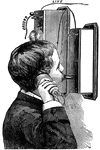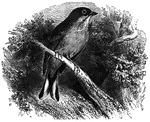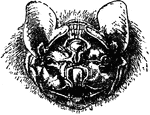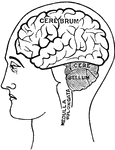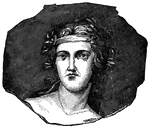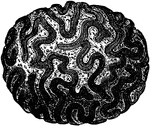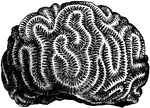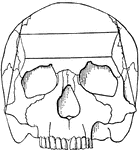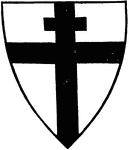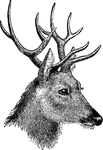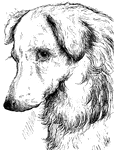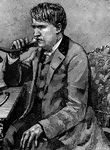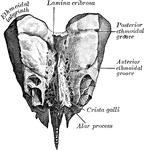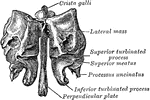
Decorative Floral A
An ornate capital A surrounded by leaves and vines, used at the start of a new chapter or heading.

Antelope Head
"Head of antelope (Gazella granti), showing horns." —The Encyclopedia Britannica, 1903

Archegosaurus Head
Archegosaurus is a genus of amphibian which lived during the Asselian to Wuchiapingian ages of the Permian,…
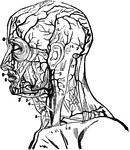
Arteries of the Head and Neck
Arteries of the head and neck. Labels: 1, primitive carotid artery; 2, occipital branch to the back…

Decorative Floral B
An ornate capital B surrounded by leaves and vines, used at the start of a new chapter or heading.
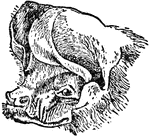
Head of Free-tailed Bat
The Big Free-tailed Bat (Nyctinomops macrotis) is a bat species found in South, North and Central America.
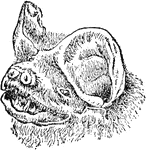
Head of Mastiff Bat
They are generally quite robust, and consist of many strong flying forms with relatively long and narrow…
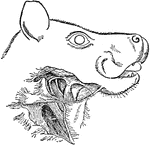
Head and Neck of Singing Fruit Bat
Epomophorus franqueti. Males have two large pharyngeal sacs and an enlarged larynx that enables them…
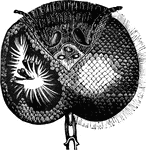
Eyes of a Bee
"The eyes, which are among the most wonderful objects in nature, are almost always of the kind called…

Honey Bee
"Head and Appendages of Honey-bee (Apis). a, Antenna or feeler. g, Epipharynx. mxp, Maxillary palp.…

Boa
"In popular language, the name of all those large serpents which kill their prey by entwining themselves…
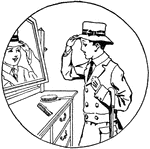
Boy Trying on Hat and Looking at His Reflection
An illustration of a boy trying on a hat and looking at his reflection in the mirror.
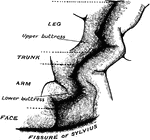
Precentral Gyrus in the Brain
The convolutionary projections of the precentral gyrus, and their relationship to motor areas.
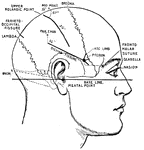
Principle Fissures of the Brain
Showing the lines which indicate the position of the principal fissures of the brain.

British Golden-rod
British Golden-rod is a member of the large composite genus Solidago, which is chiefly North American.…
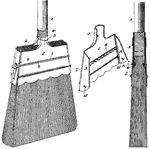
Broom Head
A broom is a cleaning tool consisting of stiff fibres attached to, and roughly parallel to, a cylindrical…
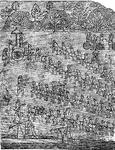
Winged Bull
An ancient Assyrian wall relief, depicting the symbol of a winged bull with the head of a human male.
Armed Bullhead
"Noted for being completely covered in horny scales. It is common on all the coasts of Europe and Greenland."…
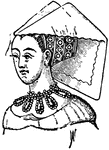
Butterfly Head-dress
"An example in which the type of a particular head-gear is exhibited with no less of moderation than…
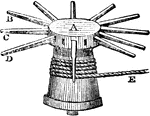
Capstan
"The capstan, in universal use, on board of ships, is an axle placed upright, with a head, or drum,…

Chaeronycteris Mexicana
"Head of Chaeronycteris Mexicana, showing fibrillated tongue." —The Encyclopedia Britannica, 1903
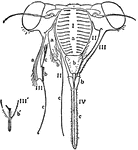
Head of Cicada
A cicada is an insect of the order Hemiptera, suborder Auchenorrhyncha, in the superfamily Cicadoidea,…
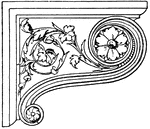
Renaissance Console
This Renaissance console is shown in its side view. It is richly ornamented with spiral curved leaves…

Coral Head
Compound coral head with polyps partly expanded and partly contracted. The expanded polyps show the…
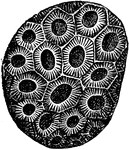
Coral Head
A compound coral head with crowded prismatic corallites. The specimen represents a worn pebble, formerly…
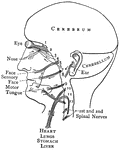
Distribution of the Cranial Nerves
"The cranial nerves are thus arranged in pairs: 1, olfactory nerves, special nerves of smell; 2, optic…
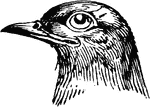
Head of Cuckoo
The head of a Cuckoo, a bird belonging to the Scansores order. Scansores is an order of birds, popularly…

Decorative Floral D
An ornate capital D surrounded by leaves and vines, used at the start of a new chapter or heading.
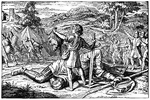
David Holds the Head of the Slain Goliath
"Then David ran, and stood over the Philistine, and took his sword, and drew it out of the sheath thereof,…
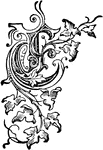
Decorative Floral E
An ornate capital E surrounded by leaves and vines, used at the start of a new chapter or heading.
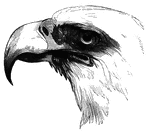
Head of a Bald Eagle
The head of a bald eagle. The distictive white plumage of this area earned it its nickname.
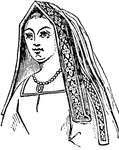
Elizabeth, Queen of Henry VII
"The angular head-dress of Elizabeth, Queen of Henry VII." — Encyclopedia Britannica, 1893

Encased Coin
"The surrounding of the punchmark with a band bearing a name, and the introduction of a head in its…
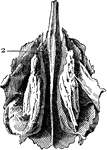
Ethmoid Bone of the Human Skull
Ethmoid bone, posterior surface. The ethmoid bone is an exceedingly light, spongy bone, placed between…

